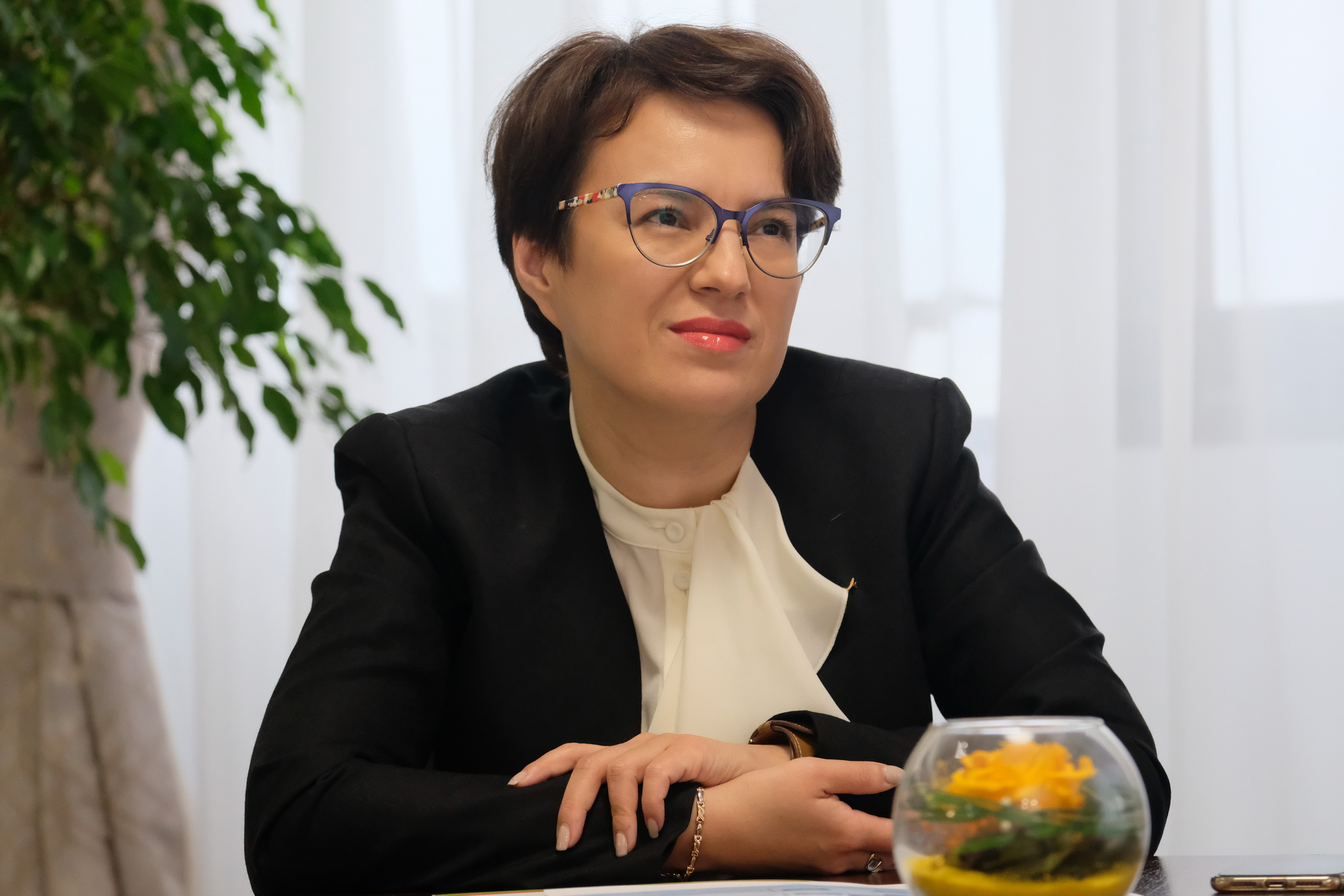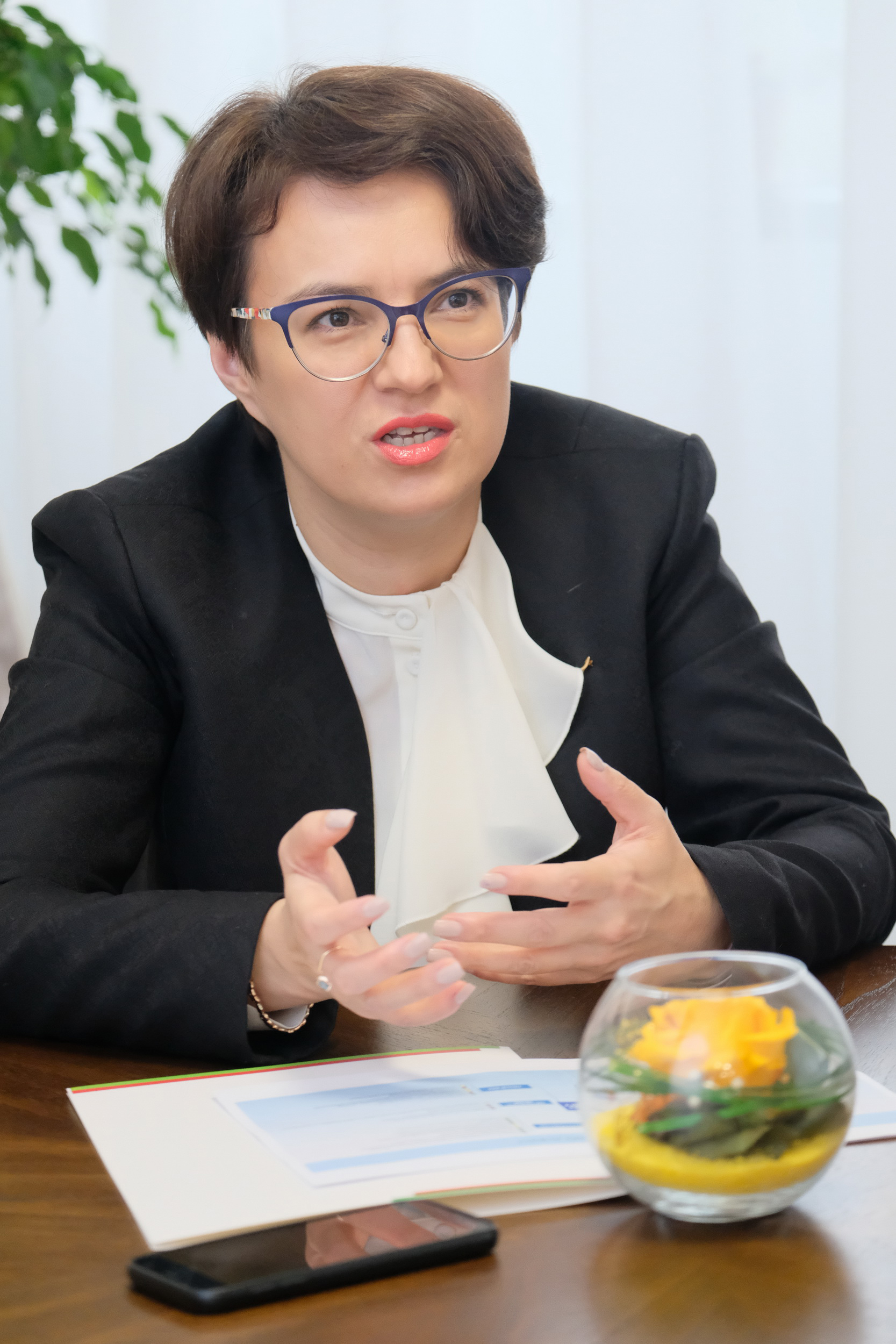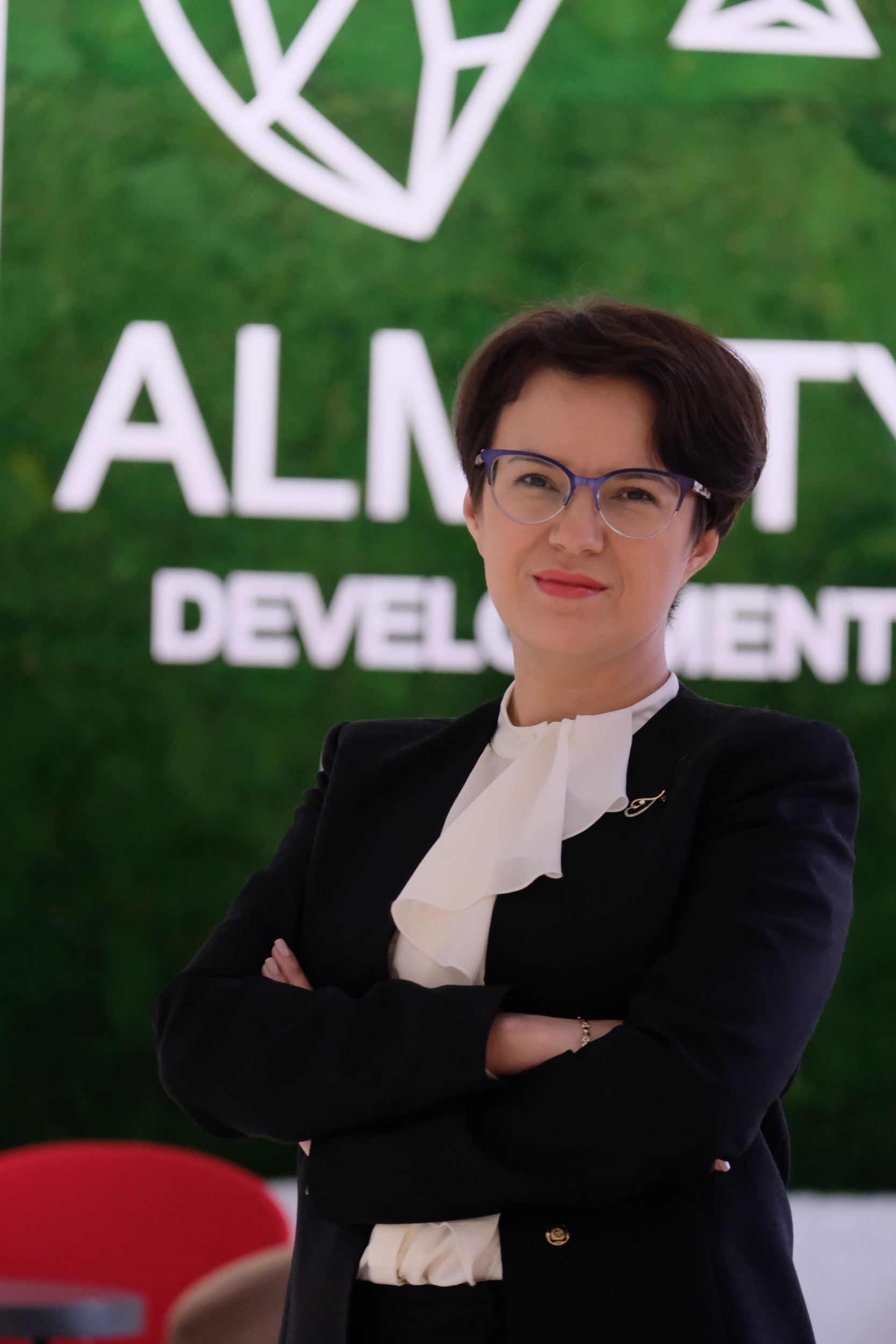Smart City Almaty: From the «Onay» system to the robot in the Call Center.
A few years ago, program Smart City Almaty started in the southern capital. The new project, based on innovative technologies, should make the life of Almatyians more comfortable and easier, as well as improve the overall standard of living. So what has already been realized and what other technological innovations will come to the aid of the citizens, we decided to find out. Kapital.kz, the correspondent of the Business Information Center, met with the chairman of the board of the Almaty City Development Center, Zhanna Tulegenova.

- Zhanna Tulegenova, when was the Smart City Almaty launched?
- Active development began in 2016. The Institute of Engineering and Information Technology of KBTU (Kazakhstan-British Technical University) together with the International Consulting Company IDC was involved as partners. Several of the world's largest cities, such as Riyadh and New York, are developing based on the concepts proposed by IDC. Joint efforts were carried out inventory of all information systems that are in use in the city, quasi-state companies, all organizations that work directly with the city. We have seen what we have at the moment - what quality, condition and efficiency existing information systems have. It was a lot of work.
- What does it mean, what specific areas of citizens' lives are affected?
- Our main task is to make the city comfortable for every resident and guest of Almaty. To do this, the best world practices adapted to our conditions are used. These are not simple words, as it may seem at the first time, it is the basic principle of our work. Now the Almaty City Development Center has a technical expertise on all projects on the digitalization of the city. We hold it on several criteria.
First, the quality of services for the end consumer must be improved. If it is an area of education, it should concern parents, students and teachers in the first place. If health care is for patients and doctors. Inefficient working methods and bureaucracy are declining, the speed of service delivery is increasing, their quality and transparency are improving. If the system to solve this problem meets these parameters, it is implemented. We don't start digitalization for the sake of digitalization.
Secondly, improving the quality of management. Our systems should help to manage processes, to see what is happening in reality. There's a good phrase, «You can't control what you can't count.» If you can't count the passenger flow, you don't manage the process of providing residents with quality public transport. We need to rely on specific numbers. Based on all this, we analyzed the various areas of life of the city and identified the main areas on which to focus in the first place. These are public transport, education, health care, housing, security, as well as the digitalization of state services and public administration. These are the things we often encounter in everyday life.
- What does digitalization specifically mean?
- «Let's take public transport as an example. The city serves about 15 carrier companies. Accordingly, the personnel, equipment, the vehicles themselves are in their private property. The state cannot provide digitalization for them at their own expense. That wouldn't be fair. When business is profitable, the owner himself tries as quickly as possible all these technologies (automated control systems, GPS trackers and so on) to implement at home. If it is unprofitable- such services are introduced much slower, because digitalization is also transparency. You can see where you earned and where you may have cheated.
And since public transport is the social sphere of life of our citizens, it becomes a state function that must be managed and seen as it all happens. Because it is the city administration that gives subsidies for passenger transport, compensation for the passage of preferential categories of citizens, often buys the vehicles themselves.
Let us remember how the Onay system was implemented? Resistance was on the part of some carriers, and part of passengers. Now we see that users of public transport are successfully using a new type of fare. Today, 97% of the payment in land-based vehicles is on the «Onai» cards. This has allowed us to solve a lot of problems. We saw how many people use public transport every day, on which routes they move, where additional buses need to be run.
Today, GPS- trackers are installed on every bus. We can see where the vehicle is and whether it has left on the route. This data is uploaded to the situation center and analyzed. All this improves the sphere of public transport, and therefore improves the quality of life of citizens.
- What is the most active work going on now?
- The utility industry is very important; it is not developing as fast as the same public transport. We want to understand the specific amount of resource consumption: how much the population consumes, what proportion of production, where and how losses occur. Today, more than 90% of apartment buildings are covered by household appliances. But on water an interesting situation - the level of instrumentation of legal entities is 100%, with remote removal of readings - 40%. The private sector, namely the individual housing, is covered by 46%, and remote collection only - 3%. Now there is a large program with Republican support to modernize this sector. Subsidies are provided for low-income families, and active work with the population is underway.
In addition, the housing and utilities sector has already launched automation of the activities of the CAO and their interaction with the population. Residents are able to monitor the work of the CAO through an electronic system.
- Since the launch of the program, what has already been implemented at the moment?
- It is difficult to say that we have completely completed the work on something. Because it's a constant job that requires monitoring and analysis. There are projects that are running and fully functioning. In addition to organizing public transport, we have successfully introduced digitalization into education and health care. Last year, we fully automated state services to stage and issue referrals to kindergartens and first classes. There is no longer any need for direct contact of the parent with the director of the kindergarten, with the district education department. And in your turn, if you stand up to it, no one can influence. There are no unnecessary intermediaries. The same thing happens with admission to the first class, transition from one school to another, school lunches, summer camps, etc.
There is a single medical information system in health care. An appointment to the doctor and a call to the doctor's home online have become available. Plus, this program allows you to switch from a paper maintenance of a health passport to an electronic one. You no longer need to carry a hospital book and restore it in case of loss. Now we want to ensure that the paperwork of doctors was as little as possible. According to the protocols, they had to fill out 127 paper forms. During the year, 80% were digitized, and now public hospitals and clinics are switching to paperless form of work. At the moment, 1 million 768 thousand people have been established e-passports of citizens' health. This is almost the entire population of the city.
Calling a doctor at home and an appointment to see a doctor is the most sought-after service of Almaty residents. It accounts for about 60% of all electronic services provided. In general, Almaty residents are very advanced users. According to the portal Egov.kz, a third of all requests are in our city.
- Can we see the clear horizon of the moment, when the southern capital will become «smart«?
- Every day we are getting closer to this. In general, even in many European cities the process of digitalization has been going on for decades. And it's not finished yet. The easiest way to create a «smart» city is when it is compact and built from scratch. If you have to technologically rearm the metropolis, this process will take longer. There are interesting examples of building «smart» cities from scratch. For example, Innopolis in Tatarstan, designed for 5,000 persons. Interesting, beautiful, but quite small, like one neighborhood of Almaty. In other countries there are similar projects, for example, in India, where it is planned to build 100 «smart» cities. There are also similar plans in the UAE.
I want to note that some countries have just started or have recently started to automate state services. It's just that we are used to many things and do not pay attention to our already accomplished projects. For example, the same CAO. We started to implement them more than 10 years ago, when some states did not even think about it. And today they are taken for granted. Now about 80% of the state government for business and the population is in digital format.
- And what will be brought to the logical end?
- In my opinion, a lot of work has been done on public transport. And in order to claim that the city has an intelligent transport system, you need to refine a few things. First, traffic lights. Today we have 77% of traffic lights in automated management. We are working in this direction. They will be managed no longer by a person, but they themselves will assess the situation on sensors: congestion and roads, and pedestrians. We also need to complete the second stage of Automatic Road Safety Information System. It was first introduced in Almaty in 2012. It is a system of photo and video recording of traffic violations. The investments that were invested in it paid off in the first years. The city has invested 3.4 billion tenge, for 5 years the budget from fines received 24 billion tenge. This money is invested in transport reform.

Now, when we talk about a «smart» city, it means not only to see and manage all processes, it is also to analyze, predict and work preventively. A situation center has been set up for this purpose. It is an automated information and analytical system with different modules. It integrates data from urban, national information systems and databases to monitor, analyze and plan the city's socio-economic processes. The system allows you to get rid of data collection manually and minimizes the «human factor.» This will make more effective operational and strategic management decisions based on reliable and up-to-date data. There is a lot of work to be done in this direction.
In terms of the automation of services, state and quasi-state bodies actively cooperate with each other and adopt best practices. For example, we went to Nur-Sultan to see how the city put the work on big data. We often come to delegations from different regions, who are interested in our experience (response scripts, algorithms, systems) to create a situation center, public reception agency Open Almaty. Of course, all regions are going into automation.
- We haven't touched on such an important subject as ecology...
- In this direction, we are working with the ‘Talap’ think tank and are working with Microsoft to study a system that will collect all reliable data. Because there is always increased interest and diverse opinions around this topic. Especially around what most affects the environmental situation of Almaty. According to various expert estimates, 65-70% of all emissions in the city are still produced by road. We continue to gather information on this issue, hold meetings with experts, various seminars, look at different systems installed in different cities of the country and in Russia. This is a complex and sensitive topic for citizens, which must be engaged and on the basis of reliable data to choose the right way to solve it.
In addition, a lot of work is carried out on landscaping, gasification, on the transition of public transport to gas, the subway will be built, LRT will be introduced, a plant for the assembly of electric buses has been opened, and a garbage-sorting plant has started work.
- If we talk about the use of «smart» innovations, what can be given a specific example?
- Almost every program is based on innovative technologies. Now we are introducing and developing several programs based on machine learning, artificial intelligence. These systems will allow us to manage entire industries in the life of the city. Some were surprised by our idea of introducing a «smart» robot, which will answer the phone calls of our citizens in the joint call center. Something like the «Alice» program in Yandex. The man got bored, so he talked to her. I hope that we do not turn into an entertainment service (laughs). Theoretically, it is clear how to do it, it remains to find the performers and bring it to life.
Source: Kapital.kz













